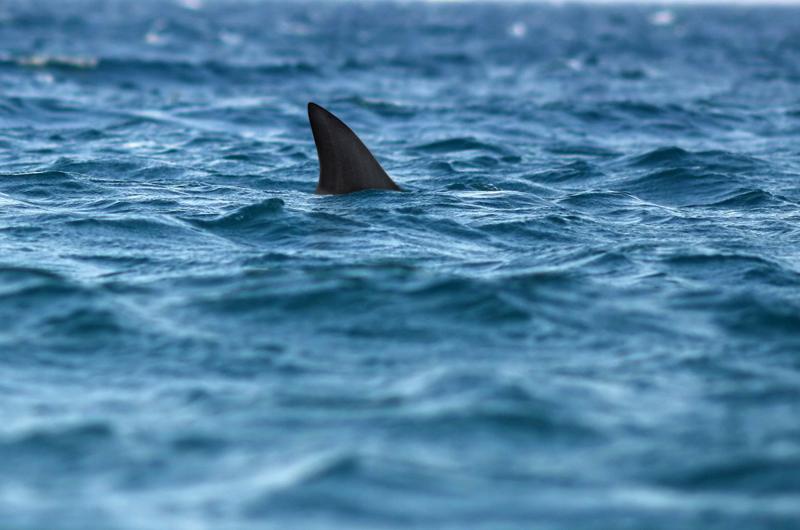As scientists track sharks and learn more about the ocean’s apex predators, a growing industry is selling shark-deterrent devices that purport to bring extra peace of mind to swimmers and surfers. Sharks are partly guided to their prey by a network of electroreceptors on their noses called ampullae of Lorenzini, which, along with cells filled with electrically conducive jelly, make them keenly sensitive to electric fields in the water. Most deterrent devices aim to use those senses to guide the animals away from people.
Sharkbanz, for instance, are wrist or ankle bands that contain fixed magnets and start at $55. NoShark is a $399 battery-operated band that emits an electric pulse that claims to disrupt the electromagetic senses in more than forty species of sharks. SharkShield uses two electrodes to create a “three-dimensional electronic field” on devices that run from $599 to $699.
But do any of them work? Since sharks usually encounter weak electrical stimuli, such as their prey’s heartbeats, the novelty and overwhelming strength of the devices can cause deterrent responses, explained Dr. Craig O’Connell, who studied shark magnetoreception at the University of Massachusetts Dartmouth and now operates O’Seas Conservation Foundation Inc. O’Connell, who emphasized that sharks are not malicious and that attacks are rare, said the devices range in efficiency. Of the current crop, he had the most confidence in SharkShield. “If I had to choose a personal shark repellent, I would pick this one,” he said. “Although expensive, it works.”

He was less confident about the devices, such as Sharkbanz, that use relatively small magnets to stop large sharks from swimming toward a person at a high rate of speed. The companies also emphasize that there is no guarantee that they will be completely effective. Last year in Florida, a young surfer wearing Sharkbanz was bitten by a black-tip shark. The company claimed the shark may have been acting in self-defense, as the youth apparently fell off his surfboard and landed on the shark.
Other companies use semiochemicals, repellents that are either synthetically made or extracted from decomposing sharks. SharkTec’s anti-shark 100, which costs $30 for two ounces, is an underwater aerosol spray that supposedly triggers a flight reaction in more than fifteen species of sharks. O’Connell said he has observed semiochemicals work occasionally, but is concerned about their potential side effects. “I was always concerned about how these often synthetically made chemicals may negatively impact the animals of the environment,” he said, adding that the odor was foul and irritated his skin.
It’s worth noting that O’Connell has his own product in development, though it’s not a personal device. It’s called the SharkSafe barrier, and uses artificial kelp forests and, in murky areas, large permanent magnets, to deter sharks from popular beaches. The magnets cause temporary discomfort to the sharks, he said, but “the animals can simply swim away in the other direction, which is what we typically see.” Other forms of deterrence, such as shark nets and drumlines, he pointed out, are lethal and much more invasive.
“The important thing to recognize is that many of these devices are heavily untested and can be considered snake oil,” O’Connell said. “The lack of negative encounter may have nothing to do with the technology at all – since the chance of a negative encounter is so extraordinarily slim.”




